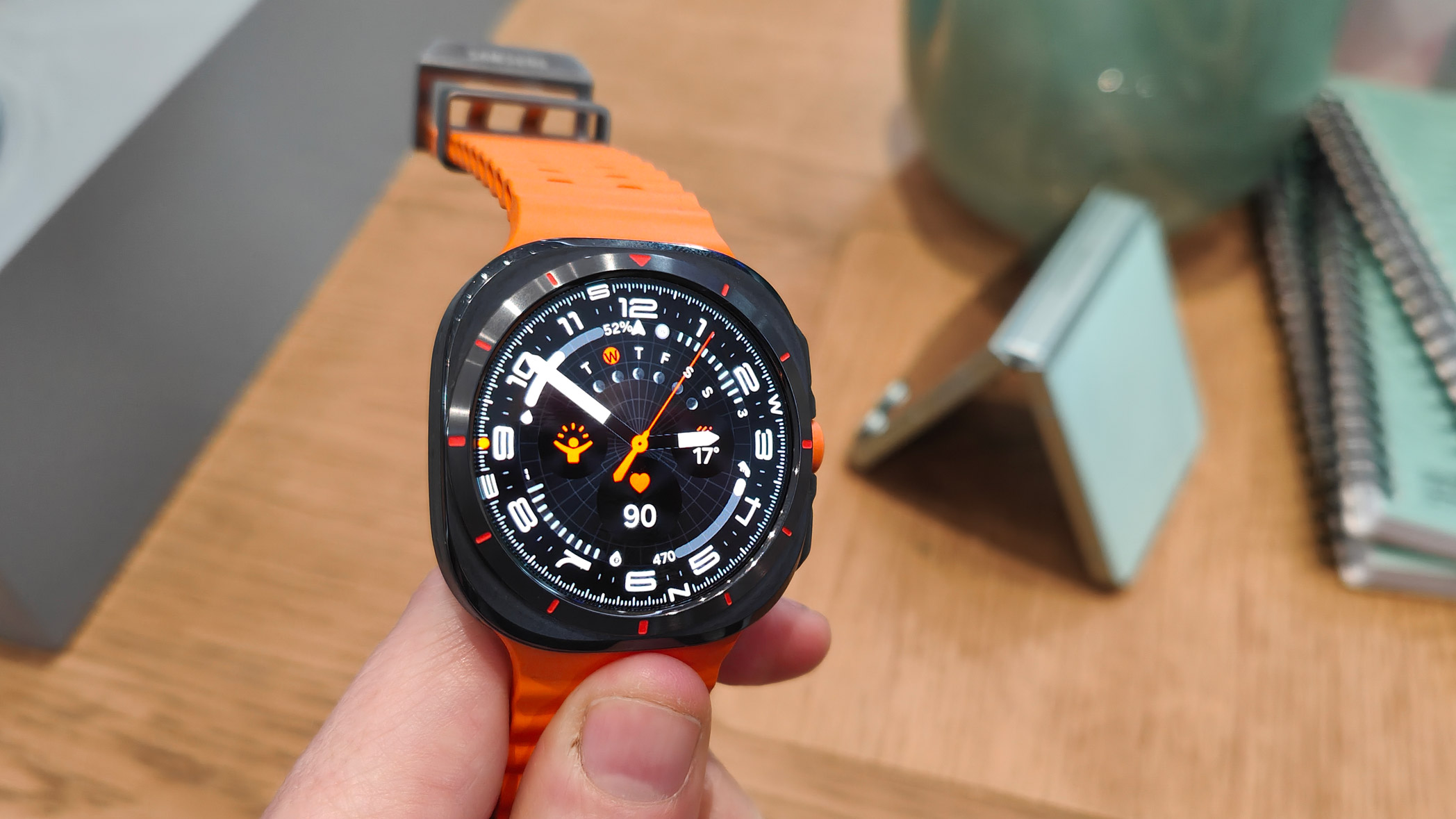
Samsung Galaxy Watch Ultra: One minute review
The Samsung Galaxy Watch Ultra is, to be clear, Samsung’s best smartwatch ever from a technical standpoint. It's bigger. It's tougher. It lasts longer. It takes Samsung’s usual design and flips it on its head, adding an endurance-watch twist – even more so than the adventure-focused Samsung Galaxy Watch 5 Pro did when it debuted a couple of years ago.
Everything about the design has been changed to give this watch a more rugged feel. The strap is thicker, more durable and harder-wearing. The watch’s outer casing is now scratch-proof titanium, and the round watch face has been mounted on a squircle-style shape which Samsung is calling a “cushion”. The usual two buttons are here, but squeezed between the new protective casing surrounding the buttons is another orange button, which Samsung is calling a ‘Quick button’ – presumably because ‘Action button’ was already taken by the Apple Watch Ultra.
All right, there’s no getting around it: Samsung has been copying Apple’s homework, and the comparisons between the Samsung Galaxy Watch Ultra and the Apple Watch Ultra are unavoidable.
Even the naming conventions are the same, for crying out loud, and they do look very similar. They both have similar features, with more accurate GPS, emergency sirens, new Night modes with red illumination, and battery life that’s slightly too short to last you a weekend in the wilderness.
However, during our tests over a week of wearing the watch, we found that the Watch Ultra was easy and ergonomic to use, it was comfortable on the wrist, and it has an impressive list of features, even discounting the smorgasbord of options you get as a Wear OS user.
Samsung's upgraded sleep and recovery scores boosted by Galaxy AI also make the watch pretty damn good at what it does, if you can stand to wear it overnight. It's priced too highly, considering there's no real screen upgrade, and looked at side-by-side with Apple’s now two-year-old Ultra concept, it looks very derivative. However, considered in isolation, it looks like the best smartwatch Samsung has produced yet.
Samsung Galaxy Watch Ultra specs
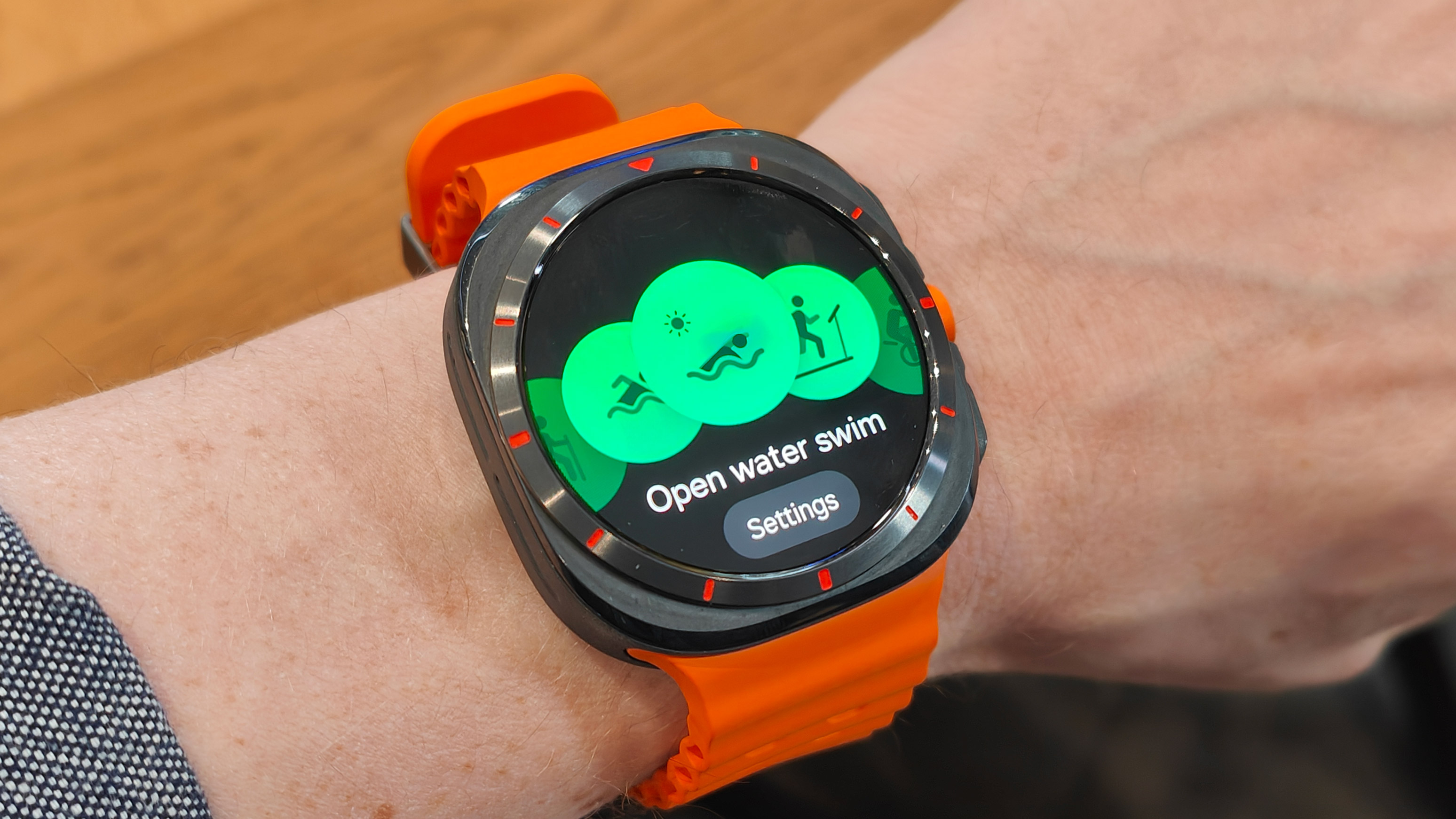
Samsung Galaxy Watch Ultra: price and availability
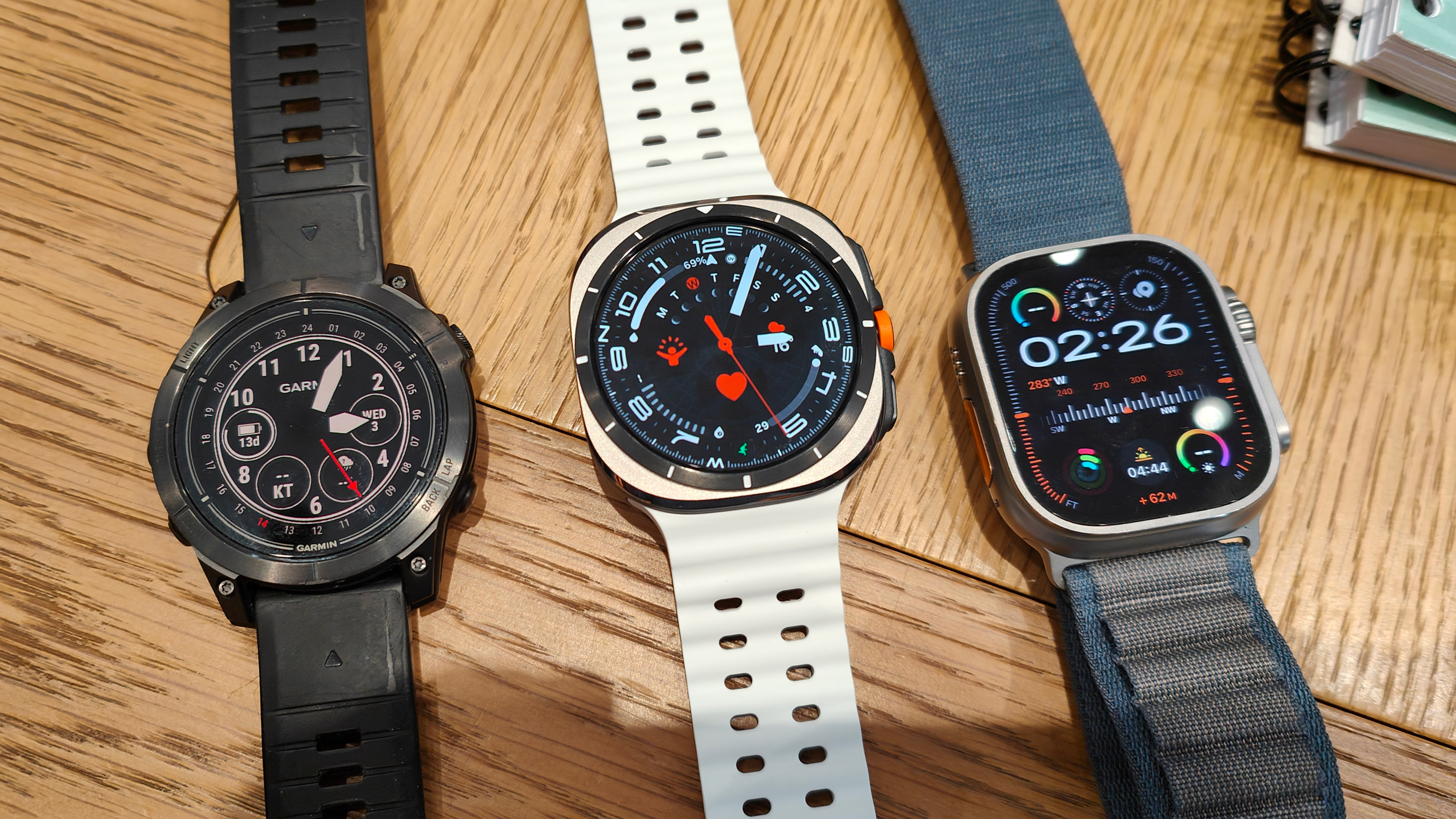
- $649 / £599 / AU$1,299
- Cheaper than premium Garmins and Apple Watch Ultra
- Still very expensive for a design upgrade
The Samsung Galaxy Watch Ultra will be available to buy on 24 July, and is available to pre-order now starting at $649 / £599 / AU$1,299.
That makes it the most expensive Galaxy Watch yet – however, it’s cheaper than the Apple Watch Ultra, while filling a similar niche for Samsung users, and it’s cheaper than some of the best Garmin watches that fill the same niche. The Garmin Epix Pro, for example, falls firmly into Samsung and Apple’s “outdoor-orientated watch with a lovely screen” territory, and is more expensive than Samsung’s offering.
Samsung’s butter-smooth AMOLED screen and refresh rate are better than the Epix Pro’s, and for less money. However, it is pricey, and unless you want to get the most out of its toughness and ability to weather extreme climates and withstand knocks, a Galaxy Watch 7 is going to be better value. However, if you want a Wear OS adventure watch, and if you can put up with recharging the watch a few times a week, the Galaxy Watch Ultra is a very reasonable purchase at this price.
- Value score: 3.5/5
Samsung Galaxy Watch Ultra: design
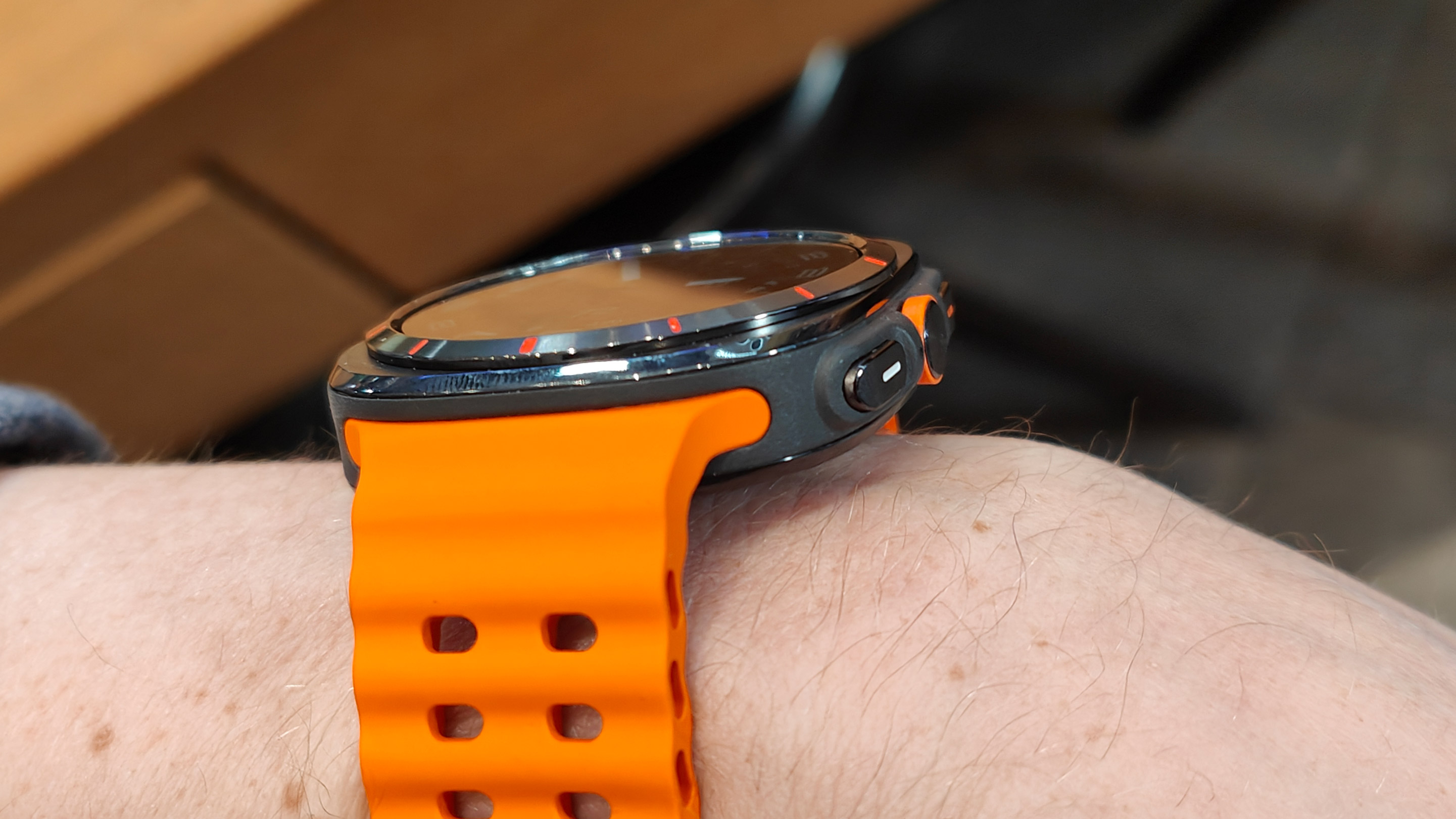
- Tougher than ever, very durable
- New Quick button
- Some design influences from the Apple Watch Ultra
The Samsung Galaxy Watch Ultra shares its round-screen design with the Samsung Galaxy Watch 7. In fact, it’s the exact same screen as the 44mm version: a 480 x 480 full-color AMOLED with a Sapphire Crystal always-on display, with the option to switch it to a new infrared style Night mode. Whereas with the Apple Watch Ultra Apple attempted to transform the screen and make it bigger than ever, Samsung leaves a lot of real estate on the watch by declining to make that screen any larger than the biggest Watch 7 size, although I suppose sharing parts helps keep the costs down.
Still, the screen doesn't really need to be any bigger than it is. The casing is made from scratch-proof titanium, while its thick silicone bands, redesigned especially for the Watch Ultra, are partially made from recycled plastics. That casing is fully dive-proof at IP68 10ATM ratings, and designed for extreme low and high temperatures to a “military grade” standard.
While we certainly couldn’t take it up Everest or throw it in a fireplace during our testing process, I can confirm that it does feel satisfyingly weighty, and more “premium” than a regular aluminum Galaxy Watch, without being cumbersome, weighing in at 60g. Its battery caps out at 100 hours in low-power mode, according to my chat with Samsung’s VP of MX James Kitto, and lasts for “a couple of days” with moderate usage.
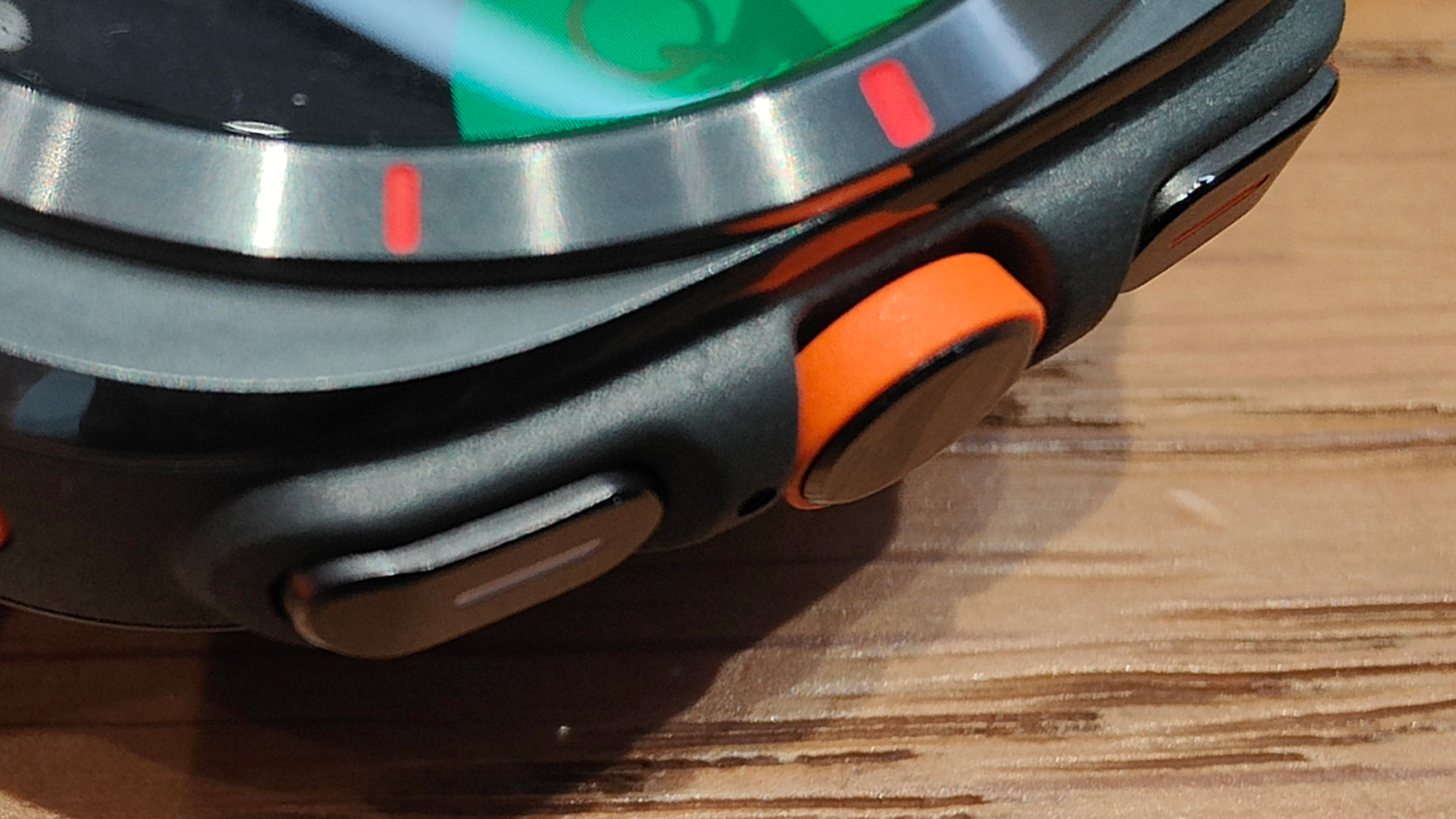
Samsung’s usual two buttons let you cycle through options in the same way as they always have, and are used in conjunction with the powerful AMOLED touchscreen. However, we also have the Quick button now, which can be programmed to automatically start workouts, move onto other segments, or skip to the next workout profile with the new Multisports tile, for disciplines like triathlon. During my tests it all flowed very well and felt intuitive, and regular Samsung users will feel right at home despite the very different design.
It's all going to come down to whether you like the look of it: in all-white, it actually looks kind of sleek. With the bright chunky orange strap and dark gray titanium cushion, I think it looks eye-catching for all the wrong reasons, bulky and cumbersome in any setting other than an activity one. The Watch Ultra is so big, so thick, and the bright orange strap our testing unit came with so visible, that it really does stick out like a sore thumb. I got lots of comments over the last week – and not all of them were positive. However, that's a matter of opinion.
What is not a matter of opinion is that this watch can withstand all sorts of temperature conditions and impacts that would kill your common-or-garden Watch 7, and that opens up the Watch Ultra and its library of third-party apps to all sorts of use cases. No dedicated dive computer feature like the Apple Watch Ultra, but using Komoot on a snowy hike or wearing it during mountain biking just became a lot safer for your watch.
- Design score: 4/5
Samsung Galaxy Watch Ultra: Features
- Dual-precision GPS
- All Samsung's usual smart features
- Gesture controls
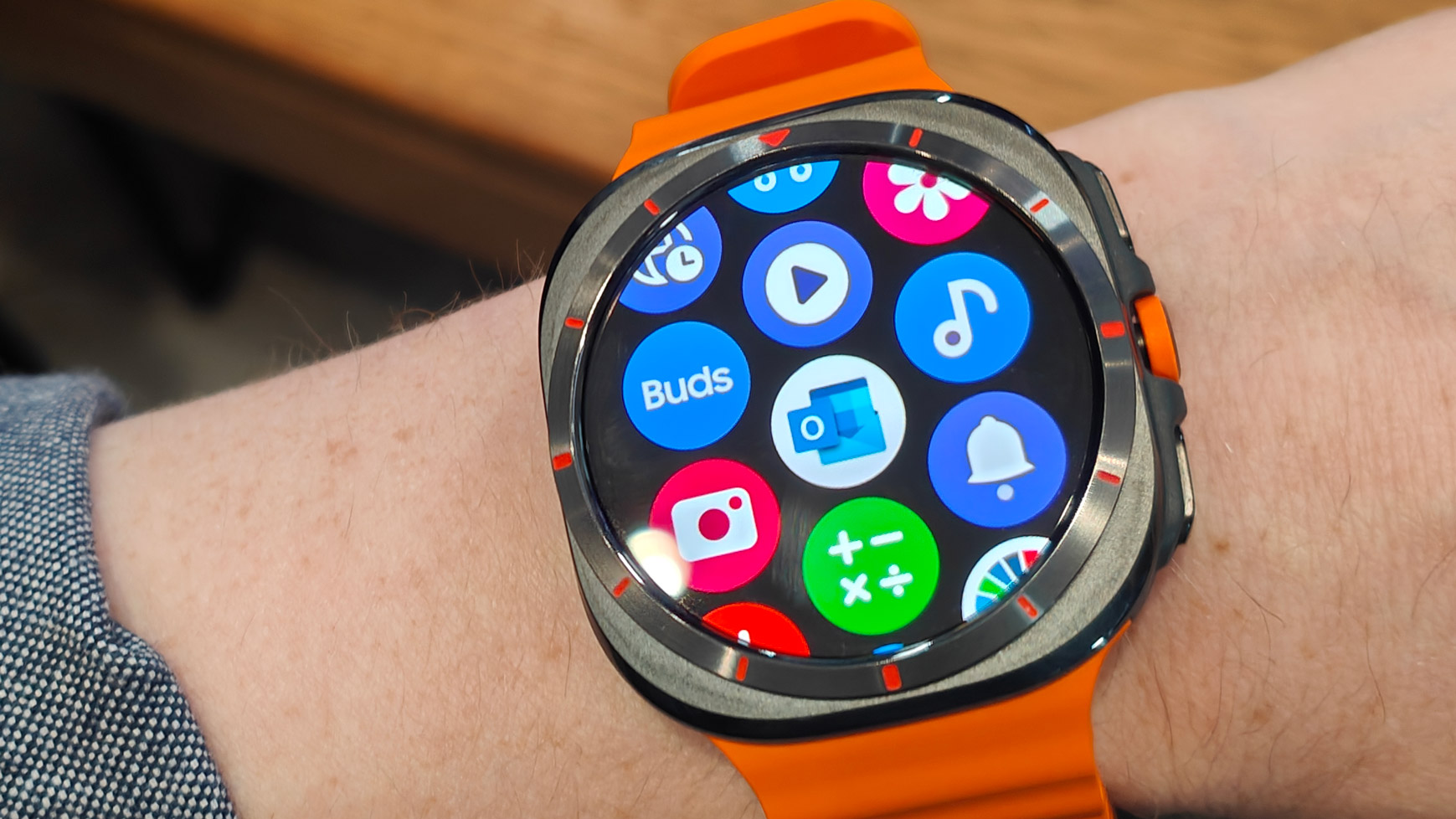
There’s lots of new stuff to talk about here. The emergency siren (which I elected not to test in Samsung’s private testing room, in case I was tackled by a security guard) is apparently ear-splitting, designed to let you signal for help if you get into difficulties in the great outdoors.
The aforementioned programmable Quick button can be programmed to kick off a workout straight away, and hikes, runs, swims and rides make use of that new precision dual-frequency GPS for added accuracy.
Those GPS workouts make use of older features, such as the TrackBack functionality first introduced on the 5 Pro. This allows you to retrace your steps on a GPS-driven route, following directions until you return to the point at which you deviated from your intended course. Very useful. Dive mode, just like on the Apple Watch Ultra, comes with a water lock and a functionality to eject any water in the system, accompanied by a series of very conspicuous beeps (I did test this feature during a surf sesh, and it worked brilliantly).
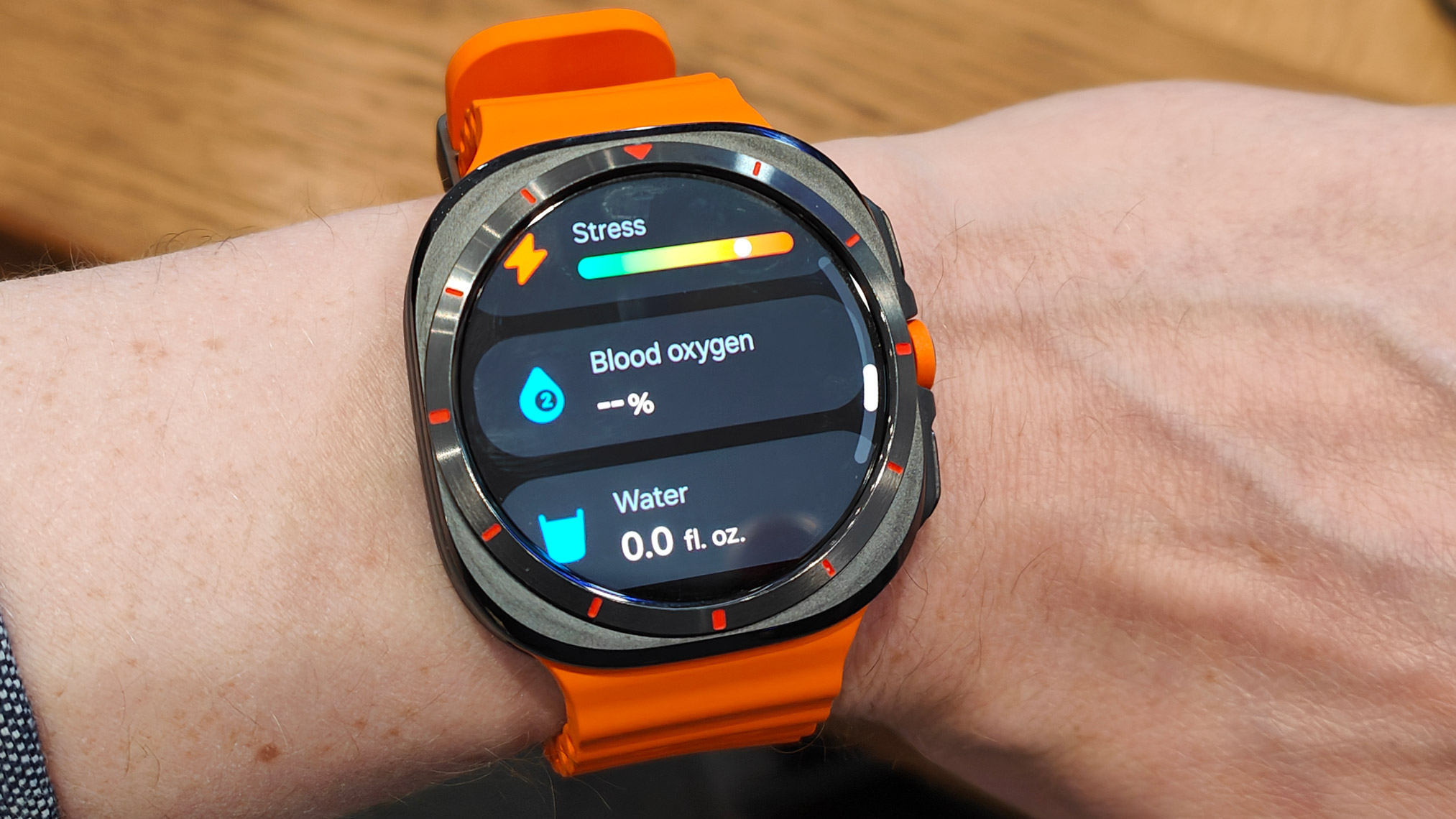
Other features that are holdovers from previous years include health monitoring (with a new, upgraded Samsung BioActive sensor array) for heart rate, blood oxygen, heart rate variability, skin temperature, electrocardiogram heart health scans and body composition analysis using BIA, which estimates your ratio of fat to muscle to bone. I tried this and found the measurements within spitting distance of my last smart-scale measurement: a test I’ve tried before with Samsung watches.
All this is powered by One UI Watch 6, Samsung’s Wear OS 5 skin, and the Samsung Health app. The latter is where much of the real magic happens in terms of health, with the app aggregating the information your smartwatch collects and processing it to offer you increased personalization and actionable insights into your health and fitness. The Energy Score in particular works arguably even better than it does on the Galaxy Ring, as you are able to better track structured workouts to determine whether you've hit your movement, exercise and calorie burn goals.
Third-party apps on Wear OS also allow you to add lots of features and functionality to your watch that Samsung doesn’t offer as standard. Samsung's dual-precision GPS is now more accurate than ever, so adventure-orientated apps like Komoot, AllTrails, Strava and so on can take advantage of this.
Finally, there's an Apple-style double-pinch gesture control here, which you can use with a Samsung phone to take a photo or dismiss an alarm. It's a cool but niche use case, although it has been implied more gesture controls are in the pipeline.
- Features score: 4.5/5
Samsung Galaxy Watch Ultra: Performance
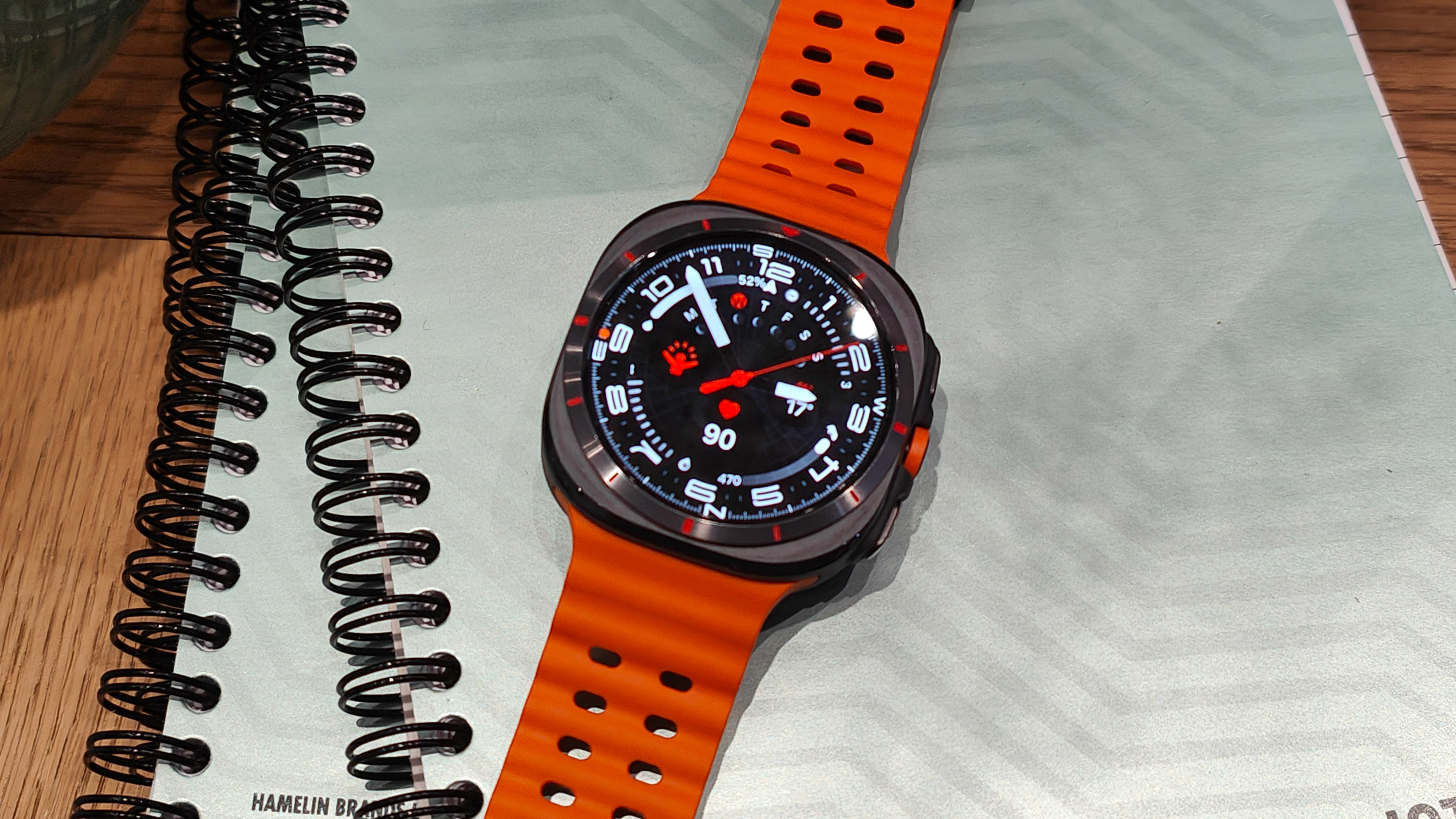
- Hardy and durable, adventure-worthy
- Great running metrics
- Battery life still underwhelming
I tested the Samsung Galaxy Watch Ultra over a week, draining the battery and testing as many of its features as I could in that timeframe, taking calls, replying to Whatsapp messages, using third-party integrations like AllTrails, and trying out the Body Composition tool. Samsung’s full suite of smartwatch and fitness features are all present and correct here, and work very well. But in terms of testing its adventure credentials, my first port of call was a morning spent surfing.
The Samsung Galaxy Watch Ultra’s water lock held up just fine underneath my wetsuit for over an hour in the water; however, although Samsung has dedicated windsurfing and kitesurfing profiles, there isn’t one for surfing. The best Garmin watches get a surfing profile which is GPS-enabled, and which can estimate how many waves you catch, how fast and far you go, even identifying your best wave of the day.
I created a custom workout using the standard template to track heart rate and calorie expenditure, naming it ‘Surfing’ in the Samsung Health app, and that was enough for the watch to send an approximation of my efforts to Samsung Health to monitor my recovery. The Ultra also synced up wonderfully with the Samsung Galaxy Ring to estimate my Energy Score based on the Ultra’s workout recording and the Ring’s sleep tracking. Samsung’s purported ultra-durable watch held up well in the water, withstanding waves, salt and a few tumbles off the board. I’d feel very safe taking it out again.
Running was even better. During a 5K around London’s Hyde Park, the Samsung Galaxy Watch Ultra was able to estimate a whole host of metrics, including heart rate (sorted into heart rate zones for easy at-a-glance reading), cadence, elevation gain, page; all the usual GPS-driven metrics. As usual, I’m satisfied with Samsung’s GPS accuracy based on comparisons with the Apple Watch Ultra 2.
Samsung’s advanced running metrics also merit mention: the Watch showed me a neat real-time graph of my running symmetry, allowing me to see if I was favoring one leg over the other. As I was running across an incline, I deliberately swerved over to the edge of the path to accentuate that incline, and was rewarded with a change in the symmetry graph. Really good stuff here.
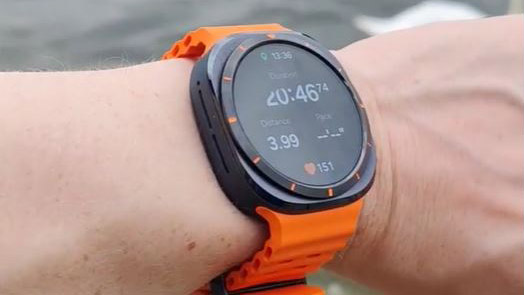
On Samsung’s basic workout profiles, there are still no real-time maps view to show positioning or offer directions (you have to use another app and track workouts in the background for this) and I didn’t love the constant touch-screen swiping I had to do to change screens while working out, as you can’t cycle through views with any of the three buttons. This issue reared its head again during my third workout that week: outdoor circuit training.
After a warm-up run, I was doing pull-ups on outdoor bars and mountain climbers on the floor, and I had to smear the Watch Ultra’s touchscreen with my dirty, sweaty hands to cycle through screens. I could pause the workout with the Quick button, but I did wish that the new button had a rotation functionality like Apple’s digital crown, but this was my only gripe. In terms of metrics, the watch held up fine.
I had another issue: that damned battery life. During my chat with Samsung’s VP of MX, James Kitto, he said the watch will top out at about 100 hours of battery life; and if it’s in low-power mode and you disable some functions like always-on display, I could certainly see it reaching those heights. But with the always-on display enabled and a couple of GPS workouts undertaken, it barely lasted into day three. That’s enough for existing Samsung Galaxy Watch or Apple Watch fans to be satisfied, but this is a watch that’s being marketed as a high-performance device, and I yearn for something I can take away for an adventurous weekend, safe in the knowledge that I won’t need to charge it.
- Performance score: 3.5/5







